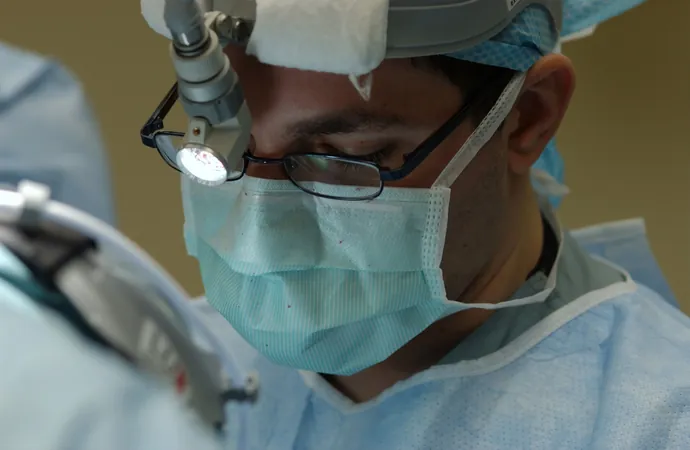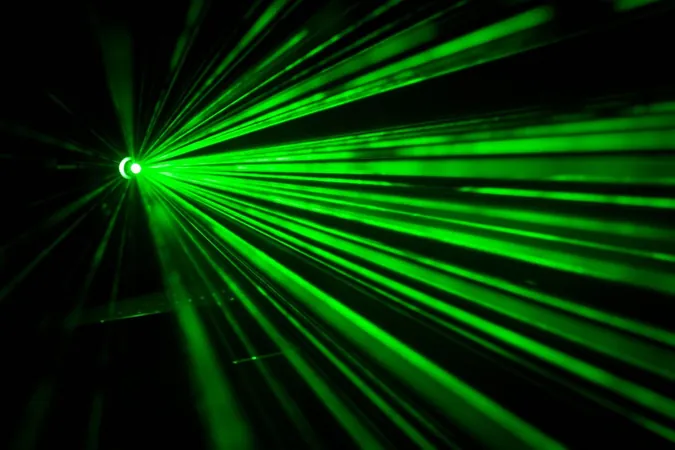
Painful but Promising: Breakthrough Biopsy Technique Enhances Prostate Cancer Detection!
2025-03-24
Author: Siti
Introduction
In a groundbreaking study led by researchers at the University of Oxford, a new biopsy method has emerged that significantly improves the detection of prostate cancer. However, this innovative technique may come with increased discomfort for patients and a longer procedure time.
Prostate Cancer Background
Prostate cancer, the most prevalent cancer among men in developed countries, has long relied on the familiar transrectal biopsy method. This traditional approach utilizes a needle inserted through the rectum to sample prostate tissue, administered under local anesthetic. Efforts to enhance this process stem largely from concerns over potential infection risks associated with transrectal procedures.
The Transperineal Method
The exciting innovation involves a change in the biopsy route: the transperineal method, where the needle is inserted through the skin between the scrotum and the anus. This alternative approach is believed to reduce the risk of infections and enhance the accuracy of diagnoses.
The Comprehensive Trial
In a comprehensive trial published in The Lancet Oncology, 1,126 men from various parts of the U.K. were recruited to assess the effectiveness of both the transrectal and transperineal techniques. The study not only focused on diagnosing clinically relevant prostate cancer but also meticulously recorded complications such as infections, effects on sexual function, and urinary difficulties.
Patient Feedback
Patient feedback was central to this research. Patients rated their experiences with the two methods via patient-reported outcome measures (PROMs), both immediately after the biopsy and again after four months.
Presentation of Findings
Presenting the study's findings at the European Association of Urology’s Annual Congress (EAU 2025) in Madrid, Professor Richard Bryant emphasized the trial's significance. “Every year, nearly 100,000 men are evaluated for prostate cancer in the U.K., and accurate diagnosis is crucial,” he stated. The findings suggest that transperineal biopsies excel in detecting significant prostate cancer cases while avoiding the need for antibiotics, addressing concerns about antibiotic resistance. However, patients reported that this method was more painful and time-consuming compared to the transrectal approach.
Expert Insights
Dr. Alastair Lamb, co-lead on the study and an expert at Barts Cancer Institute, noted the long-standing debate over the utility of transperineal biopsies. He highlighted the fact that while this new research confirmed the technique's advantage in certain aspects, the pain level and increased complexity cannot be overlooked. He also pointed out that a deeper understanding is still needed, including the costs related to the longer procedure.
Conclusion
For men facing the prospect of a biopsy, the ongoing exploration of less invasive diagnostic methods offers a glimmer of hope. Researchers are determined to pioneer new alternatives that could minimize discomfort while ensuring effective detection of prostate cancer.
This landmark study not only provides vital evidence about current biopsy techniques but also sets the stage for informed decisions by both urologists and patients regarding prostate cancer detection strategies. As the medical community grapples with these findings, discussions surrounding patient comfort and diagnostic efficacy will undoubtedly shape future protocols in prostate cancer care.

 Brasil (PT)
Brasil (PT)
 Canada (EN)
Canada (EN)
 Chile (ES)
Chile (ES)
 Česko (CS)
Česko (CS)
 대한민국 (KO)
대한민국 (KO)
 España (ES)
España (ES)
 France (FR)
France (FR)
 Hong Kong (EN)
Hong Kong (EN)
 Italia (IT)
Italia (IT)
 日本 (JA)
日本 (JA)
 Magyarország (HU)
Magyarország (HU)
 Norge (NO)
Norge (NO)
 Polska (PL)
Polska (PL)
 Schweiz (DE)
Schweiz (DE)
 Singapore (EN)
Singapore (EN)
 Sverige (SV)
Sverige (SV)
 Suomi (FI)
Suomi (FI)
 Türkiye (TR)
Türkiye (TR)
 الإمارات العربية المتحدة (AR)
الإمارات العربية المتحدة (AR)